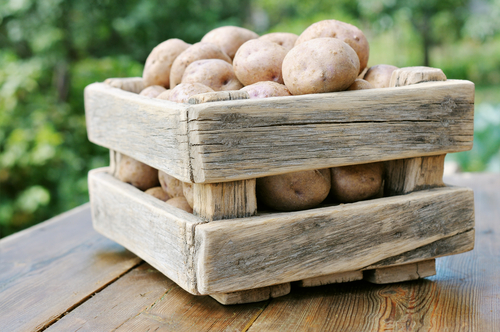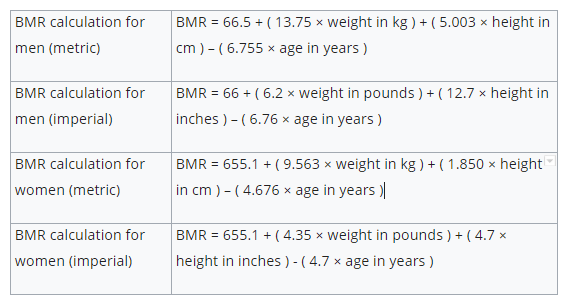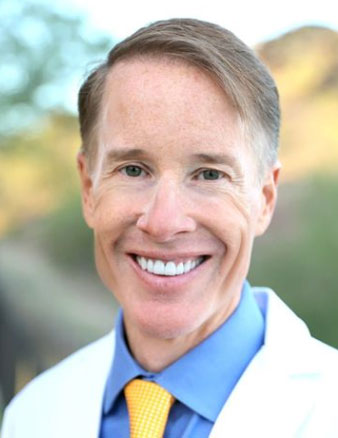It’s not about calories anymore.
It’s about fuel. Fuel is all of the things that your body can use for energy. Between carbohydrates, fats, and ketones, I have argued that there is no one that is better, worse, evil, or 100% perfect.
It frustrates me when you feel you can’t eat anything because that simply isn’t true. Because of all of the confusion around fuel, I want to show you how much fuel you need every day.
Let’s devise a plan to help your body reach its optimal state.

Concept of Fuel versus Calories
Personally, I like the concept of “fuel” over “calories” for a few key reasons.
First, not all calories are equal. Some foods have calories, but they also have so much fiber, and so much resistant starch, that they work differently.
Key Insight: What is resistant starch? It’s been referred to as the “skinny carb,” and it is one of my absolute favorite things to talk about. I have introduced it before, discussed how it can raise your energy levels (Read: Resistant starch for energy), and can even help your digestion (Read: Resistant starch for digestion).
The data is also strong that protein works differently than other sources of calories. Protein has the most satiety, per calorie, meaning that it has the ability to fill you up more than other foods.1 It also raises your basal metabolic rate, and helps to increase muscle mass.
Bottom Line: Protein does get a sort of “freebie” when it comes to your fuel load. It is also the worst source of fuel that your body can effectively use. For that reason, we are going to leave it out of the conversation moving forward.
Quality Versus Quantity
It is true that the quality of your fuel is highly important. That said, I also want to mention that sometimes the quantity can matter more (in certain cases, of course). One of the key examples of this involves fructose.
I have talked about fructose being one of the more harmful versions of carbohydrate out there (Read: 3 Tips to stabilizing your blood sugar).
More specifically, research has shown that fructose can play a role in liver damage.2
Looking further into it, though, a lot of these studies involve animals on diets being given extra amounts of fructose on top of what they were already eating.
There have been similar studies where fructose, in the context of a normal diet, is no longer harmful. This is because it fits within a healthy range of fuel intake.
The same can be said for just about any fuel source. You can take your diet, and pile anything on top of it (carbs, fat, or ketones). In any of those cases, your body will have the same response: it will have a burden of oxaloacetate and you cannot utilize that.
Bottom Line: With more oxaloacetate in your system, you need to leave it in circulation (because your body cannot use it), which hurts the blood and makes your body resistant to any of the fuel that you are additionally consuming. You can get insulin resistant, resistant to fats, or you can resist ketones. It applies to all of them.
Your Fuel Requirements

In terms of an average-sized woman, you will need 3 – 5 servings of high-quality proteins. That should serve as a really solid foundation for about one quarter to a third of your overall food intake.
When it comes to fuel, you should really start with 6 servings in total (throughout the day). You can break it down into a formula like this:
- Carbohydrates: 3 – 4 servings
- Fats: 2 – 3 servings
Key Insight: What goes into a serving? Later on, I will provide you with the amount you need of some of your favorite foods to constitute a serving. This way you can ensure that your fuel burden is appropriately measured, but first I want to tell you a little bit more about ketones…
The thing about ketones is that you do not have to consume those, but you will ideally have some bouts of prolonged exercise throughout the week. This has been referred to as LSD (long-slow distance).
Each week, all you have to do is go for a long hike for a few hours.
You will end up generating a large number of internal ketones. Also, have your dinner early or later in the evening, and have no food afterward (until morning).

Bottom Line: It does not take a 16 – 18 hour fast, but you can get a healthy amount of ketones simply with brief or overnight fasts.
What About Ketogenic Diets?
Chances are you have heard of the ketogenic diet before, and you might even be a bit “keto curious” yourself.
Much in the same way as the paleo diet movement (Read: Is the paleo diet really paleo), the ketogenic diet movement has really picked up steam.
When we discuss ketones, it is hard not to bring up the ketogenic diet.
Unfortunately, I think this tracks back to our previous point that no fuel is perfectly good, and no one type is evil. The ketogenic movement is sparked by this idea of making villains out of what we eat.
The ketogenic diet is one that forces the body to use ketones for fuel because too little fuel is available from carbs and proteins. Fats can be burned as fuel, but only when carbs and proteins can provide OAA (oxo acetoacetate). Without them, fats are converted to ketones.
Key Insight: When you are in a state of metabolic ketosis, any time that you are not getting enough fuel, your body will convert fats into fuel (and will eventually use your own fats, if you run out of glycogen). That process does result in some ketones being made.
Does It Work?
In most cases, we do this just about every day – specifically through the course of the night. That is basically how we keep our blood sugar and energy levels steady when we are not eating for long periods at a time.
Honestly, you achieve the same (if not a greater) level of fat loss when you are getting a fuel deficit, but with a broader range of fuel.
There are actually some biochemical reasons to suggest that your body burns fat better when you are not in a state of ketosis.
It might sound counterintuitive, but you can burn fat better for fuel when you have got some more carbs and protein on your side. This is what we call beta-oxidation.
Bottom Line: The big promise of the ketogenic diet only leads to weight loss if there is a fuel deficit in your body. This means that there really is no chain reaction, and it does not inspire your body to start burning up fat out of control.
Worried About Your Diet?
My discussion today is primarily concerned with getting the right amounts of fuel, followed by the quality, but that does not mean that the quality of your fuel does not matter. Instead, you should focus on the types of fuel that can benefit you the most.
In fact, I have made the process easier with a selection of shakes and other supplements that can help you get your diet in order (Weight Loss Supplements). You should feel good, and confident, in the fuel you are putting into your body. I would love to be able to help you get started.
Estimating Your Requirements

When it comes to your fuel, it is all about knowing how much you require. This way, you can really tailor your needs specifically to your body. Here are a few helpful ways that you can begin to estimate your fuel requirements…
From Resting Energy Expenditure
I want to introduce you to the Resting Energy Expenditure (REE) equation. This is used to calculate the amount of energy that you are expending, or using, in a 24-hour period.
While it might not be perfect, it can really help you get your fuel burden in order so that you can get to feeling better and enjoying the benefits that dialed-in fuel can bring. Here’s a way you can calculate for it.

From Total Caloric Intake
A simple way to think about it is to take your calorie total, and to assume the following:
- 25% is protein, 4 calories per gram, and 20 grams per serving
- 30% is fat, 9 calories per gram, and 10 grams per serving
- 45% carbs, 4 calories per gram, 20 grams per serving
Bottom Line: Whether you are looking into your REE equation, or understanding how much fuel you need based on your total caloric intake, it is so important to plan your meals properly and to get the right amount of fuel from the right sources (and with plenty of variety). What goes into planning a good meal? Let’s talk about it!
Plan Your Meals
Here is a handy trick that I think will help you. For each meal, you should plan to have one main fuel source for each.
That is because it is often thought that you need to get one or the other, instead, you need to think about it as getting too much fuel.
If you get a nice mixture, at the right amount, you are doing a lot of good for your body. If you take anything away from today’s article, I want you to know that variety is key.
It is not about cutting a fuel source entirely out of your system, but getting the right kind of fuel, in the right amounts, to benefit your body.
When it comes to each type of fuel source, allow me to help you uncover some of the best examples (and how much you should be getting of each). Here are some helpful examples:
For Fats:
- Nuts or seeds (2 tablespoons constitutes a serving)
- Purified oils (2 teaspoons is one serving)
For Carbs:
- Cooked grains, cooked beans (½ cup is equal to one serving)
- Potatoes, squash, and other high-carb veggies (¾ cup is one serving)
For proteins, we can think of things more generally. Your best serving of high-quality protein will be about 3 – 5 ounces of:
- Fish
- Seafood
- Poultry
- Lean Meat
- Soy Foods
- Protein Powders
Bottom Line: Get a good mix of each of these per day, while adjusting the total number of fuel sources that you get throughout the day. Try not to think of it in terms of cutting a fuel source out, but the total fuel burden.
Your Fuel, Your Benefits
The benefit of getting your fuel load in its proper place include:
- Helping with your energy
- Getting your energy up
- Good longevity
- Lower risk for chronic disease
- Better aging effects
- Positive brain function
- Better digestive function
Fuel is so important, and what I want you to know is that it is your total fuel that counts.
When you have that in the right supply, coupled with the right sources, you are doing your body so much good. Once you get it right, you are bound to feel it, too.

Your Body, Your Fuel, Your Health
You deserve to feel confident in your body, and the way that you feel on a day-to-day basis. That is why I always focus on helping you gain the whole story about the world of health around you.
Feel like you could use an even better understanding of your health?
Please feel free to take the Adrenal Quiz today (Click Here), and grant yourself the knowledge you need to take the right steps towards good health.
Sources
1 – https://www.sciencedirect.com/science/article/pii/S0924224414002386
2 – https://www.foodnavigator.com/Article/2013/06/27/Dietary-fructose-linked-to-liver-damage-by-gut-bacteria-mechanism

1. Schedule a Thyroid Second Opinion with me, Dr. C, Click Here for Details
2. Download and use my Favorite Recipes Cookbook Here
3. Check out my podcast Medical Myths, Legends, and Fairytales Here
Dr. Alan Glen Christianson (Dr. C) is a Naturopathic Endocrinologist and the author of The NY Times bestselling Adrenal Reset Diet, The Metabolism Reset Diet and The Thyroid Reset Diet.
Dr. C’s gift for figuring out what really works has helped hundreds of thousands of people reverse thyroid disease, lose weight, diabetes, and regain energy. Learn more about the surprising story that started his quest.


